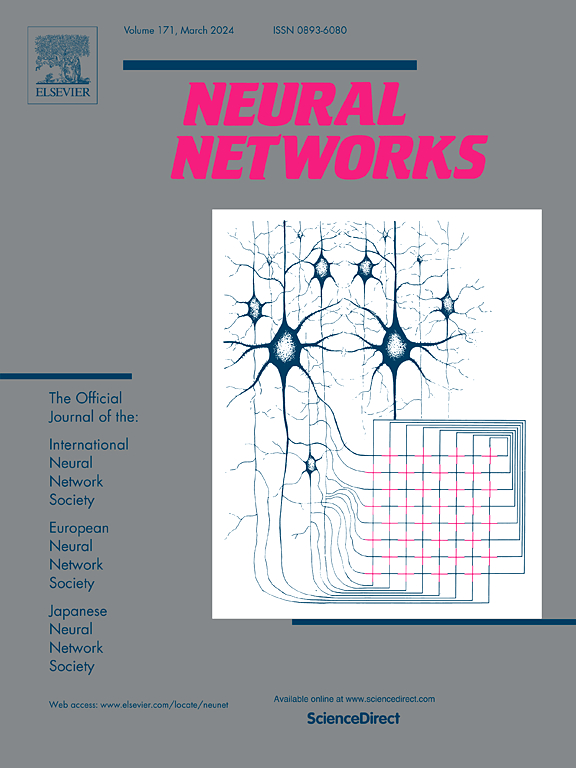Adaptive estimation of instance-dependent noise transition matrix for learning with instance-dependent label noise
IF 6
1区 计算机科学
Q1 COMPUTER SCIENCE, ARTIFICIAL INTELLIGENCE
引用次数: 0
Abstract
Instance-dependent noise (IDN) widely exists in real-world datasets, seriously hindering the effective application of deep neural networks. In contrast to class-dependent noise, IDN is influenced not solely by the class but also by the intrinsic features of the instance. Current methods for addressing IDN typically involve estimating the instance-dependent noise transition matrix (IDNT). However, these approaches often either assume a specific form for the IDNT or rely on anchor points, which can result in significant estimation errors. To tackle this issue, we propose a method that makes no assumptions about the form of IDNT or the need for anchor points. Specifically, by computing similarity scores between each instance’s feature representation and the label representations, the instance-label confusion matrix (ILCM) captures the relationships between global instance features and different categories, providing valuable insights into the degree of noise. We then adaptively combine the noisy class posteriors from network predictions (for noisy data) or given labels (for clean data) with the ILCM, weighted by the degree of noise, to enhance the accuracy of IDNT estimation. Finally, the obtained IDNT adjusts the loss function, resulting in a more robust classifier. Comprehensive experiments comparing our method with state-of-the-art approaches on synthetic IDN datasets (F-MNIST, SVHN, CIFAR-10, CIFAR-100) and a real-world noisy dataset (Clothing1M) demonstrate the superiority and effectiveness of our approach.
基于实例相关标签噪声学习的实例相关噪声转移矩阵自适应估计
实例依赖噪声(Instance-dependent noise, IDN)在现实数据集中广泛存在,严重阻碍了深度神经网络的有效应用。与类相关噪声相反,IDN不仅受类的影响,还受实例的内在特征的影响。当前处理IDN的方法通常涉及估计与实例相关的噪声转移矩阵(IDNT)。然而,这些方法通常要么假设IDNT的特定形式,要么依赖于锚点,这可能导致严重的估计误差。为了解决这个问题,我们提出了一种不假设IDNT形式或锚点需求的方法。具体来说,通过计算每个实例的特征表示和标签表示之间的相似性得分,实例-标签混淆矩阵(ILCM)捕获全局实例特征和不同类别之间的关系,为噪声程度提供有价值的见解。然后,我们自适应地将来自网络预测(对于有噪声的数据)或给定标签(对于干净的数据)的噪声类后验与ILCM结合起来,通过噪声程度加权,以提高IDNT估计的准确性。最后,得到的IDNT调整损失函数,得到一个更鲁棒的分类器。综合实验将我们的方法与最先进的合成IDN数据集(F-MNIST, SVHN, CIFAR-10, CIFAR-100)和现实世界的噪声数据集(Clothing1M)进行比较,证明了我们的方法的优越性和有效性。
本文章由计算机程序翻译,如有差异,请以英文原文为准。
求助全文
约1分钟内获得全文
求助全文
来源期刊

Neural Networks
工程技术-计算机:人工智能
CiteScore
13.90
自引率
7.70%
发文量
425
审稿时长
67 days
期刊介绍:
Neural Networks is a platform that aims to foster an international community of scholars and practitioners interested in neural networks, deep learning, and other approaches to artificial intelligence and machine learning. Our journal invites submissions covering various aspects of neural networks research, from computational neuroscience and cognitive modeling to mathematical analyses and engineering applications. By providing a forum for interdisciplinary discussions between biology and technology, we aim to encourage the development of biologically-inspired artificial intelligence.
 求助内容:
求助内容: 应助结果提醒方式:
应助结果提醒方式:


